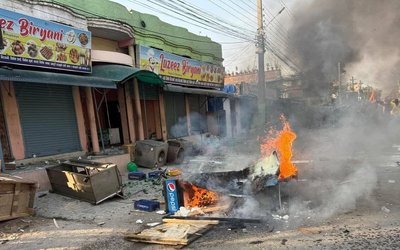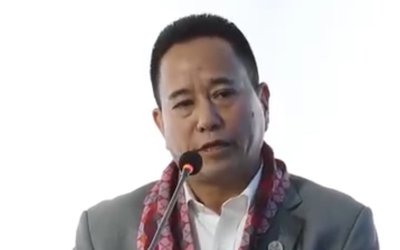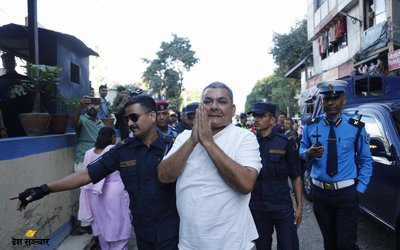More on News





As prime minister, Madhav Nepal had a dream — initiating the construction of a Republican tower, a Nepali version of the Eiffel tower. He laid the foundation at Ratna Park in the heart of Kathmandu, though the project was yet to be technically endorsed. It was more an expression of intent. Madhav Nepal now continues only as a caretaker prime minister. His vague dream — that of a 25-floor glass tower fitted with lifts and a spiral taircase to the top — has now been rejected by architects who considered the construction neither feasible nor appropriate in the thickly populated city centre, also a seismic zone. If the project ever materialises — its cost , time-frame and design are yet to be finalised — it not be at Ratna Park (named after the former queen mother), but somewhere in the UN park area outside the capital. Almost coinciding with the collapse of that dream project, the former crown prince, Paras declared that the end of monarchy is not what Nepalis wanted, that it was the outcome of a design from outside (he hinted it was India), and the institution would be restored if Nepal wanted. Nobody criticised Paras for his utterances. Meanwhile, the constituent assembly, which was expected to promulgate the new constitution institutionalising Nepal’s shift to republicanism, secularism and federalism, failed to meet the May 28 deadline, and its moral and constitutional status has been suspect since then. Political parties, especially the big three — the Unified Communist Party of Nepal-Maoists (UCPN-M), Nepali Congress and the Communist Party of Nepal-Unified Marxist Leninist (CPN-UML), which have led the government by rotation in the last four years of change — are perhaps the most hated.
Ragini Upadhyay, an artist who fearlessly exhibited her paintings during the royal takeover (showing King Gyanendra trying to cage “time”), now likens pro-democracy leaders to ferocious lions. The face of the lion chasing a fleeing cow- symbolizing Nepali people, resembles G.P. Koirala, who took over as prime minister and acting head of the state as well as Congress president when Gyanendra handed over power to the political parties. Koirala was then hailed by Manmohan Singh as the “legendary leader of South Asia” while former US president Jimmy Carter called him “my hero”.No one knows if Dr Singh and President Carter have changed their opinion, but the current uncertainty in Nepal stems largely from Koirala’s mishandling of the peace process. He died a failed man last March. And Ragini is not alone in her anger — Madan Krishna and Haribansh Acharya, Nepal’s well-known comedians who were active in the pro-republic campaign, recently declared “where will we perform now? The constituent assembly has turned into a venue of jokers where our leaders fight like dogs and cats.” What’s more, at least some leaders have noticed this disillusionment and the sense that the monarchy was far more patriotic. UCPN-M chief Prachanda met Kamal Thapa, chief of the pro-monarchist Rastriya Prajatantra Party-Nepal (RPP-N) to solicit support for his prime-ministerial dream. In private, Prachanda admitted that the monarchy’s overthrow was a “mistake”, but the RPP-N, with five members in the house, is yet to vote for him in the prime ministerial contest because it wants a public commitment from the Maoists, on the restoration of the monarchy. UML chief Jhala Nath Khanal is believed to have told an aide of Gyanendra the same thing, recently. Kamal Thapa goes a step further and demands that Nepal’s Hindu status be restored, as the change four years ago was not for democracy alone, and many anti-Hindu forces from abroad had been involved. “More than amillion people have been lured to Christianity since then,” he says. aras blames many NGOs (there are around 165,000 in the country, with 4,000 villages) with their own agenda, “certainly not aimed to promote our interest”. The European Union’s pressure on the government to constitutionally recognise the right to conversion and the openly documented “anti-Hindu” agenda of some NGOs has created the idea that Western forces are causing social disharmony in Nepal. This hostility against the outside world has been aided by the failure of the political parties in the past four years. No one knows whether monarchy will return, but the republican dream, like Madhav Nepal’s failed project, has come under severe strain.
(Indian Express)





